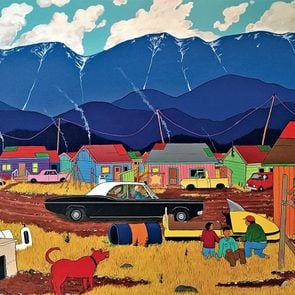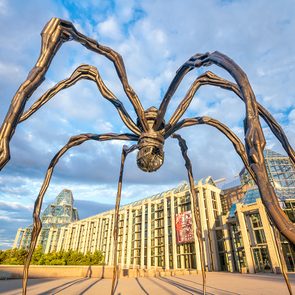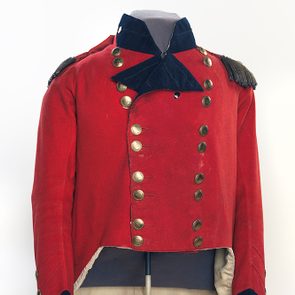The Art of Tom Forrestall
Meet a storied Canadian painter who channels his remarkable talents through the medium of egg tempera.
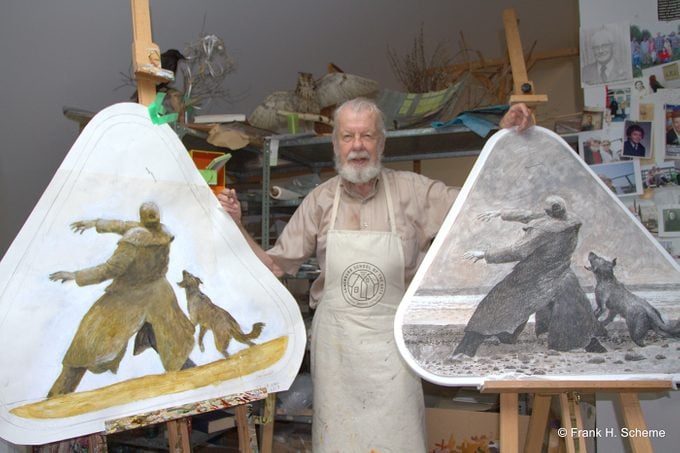
How Tom Forrestall Became One of Canada’s Leading Egg Tempera Painters
Tempera is a permanent, quick-drying painting medium that combines colour pigments with a binding agent. Because this agent is often a glutinous material such as egg yolks, tempera is also known as egg tempera. It’s one of the oldest painting mediums, dating back to murals in the ancient dynasties of Egypt, Babylonia and China, among others.
Because tempera dries so quickly, colour-blending is not possible once applied to a surface. That’s why shading is done by short strokes of colour. By contrast, oil takes longer to dry, allowing for more realistic shading. Another difference is that oil is reflective, while tempera is matte.
Nova Scotia-based painter Tom Forrestall has been using this ancient method for almost 70 years and is today recognized as one of the country’s leading realist egg tempera painters. Renowned Canadian artist Alex Colville introduced Tom to the technique in 1956, when Tom was his student.
Tom was born in the Annapolis Valley in 1936. He grew up there—in Middleton—as well as in Dartmouth, and started attending art classes at an early age. In 1954, he began studies in the Faculty of Fine Arts at Mount Allison University in Sackville, New Brunswick, having been awarded an entrance scholarship. Along with other soon-to-be-noted artists such as Christopher and Mary (née West) Pratt, Hugh MacKenzie and D.P. Brown, Tom studied under department head Lawren P. Harris (son of Lawren S. Harris of the Group of Seven) and Alex Colville, who taught at Mount Allison from 1946 to 1963.
Following his graduation in 1958, Tom married Natalie LeBlanc, whom he had met at the university. He soon received a Canada Council Grant for independent study, which allowed the couple to travel around Europe, visiting museums and viewing art.
In 1959, Tom became the assistant curator of the newly launched Beaverbrook Art Gallery in Fredericton. By the following year, he was commissioned by the Province of New Brunswick to create a painting for Princess Margaret in celebration of her wedding. Encouraged by this early success, he began to devote himself full-time to painting.
However, he was and remains a highly creative painter whose unique style hasn’t always been understood. For one, his quest to escape the constraints of traditional square and rectangular canvasses led him to use round-edged panels and a variety of other shapes, including those derived from the triangle, circle and rhombus. He has often quoted another original thinker, Oscar Wilde, who said, “An idea that is not dangerous is unworthy of being called an idea at all.”
Tom’s work has been widely recognized: He has been inducted into the Order of Canada and the Order of Nova Scotia, received a Queen’s Jubilee Medal, and earned several honourary doctorates as well as appointments to various academic and art boards. Among his special commissions is a painting for Pierre Trudeau of his sons, a gift from the nation upon the prime minister’s retirement. Tom’s had numerous solo and group exhibitions and, today, his art can be found in galleries and private collections in Canada, the U.S., Europe and the Middle East.

A Car For All Seasons
In 2013, Mercedes-Benz Canada bought Tom’s 1980 300D and commissioned him to depict the four seasons on its surface; the resulting piece is titled “A Car for All Seasons.” Tom credits the motivation and title, as well as the link to the luxury-car company, to his long-time friend Mary O’Regan, whose family owns O’Regan’s Mercedes-Benz in Halifax. To honour her, Tom painted Mary’s name on his mobile canvas. His son Frank got involved, too, capturing the months-long creative process on video:
“If you broke it down, there would be probably about 15 paintings,” says Tom. Of the work’s portrayal of seasonal transformation, he explains, “Winter, from spring down at the bottom, goes into summer.”
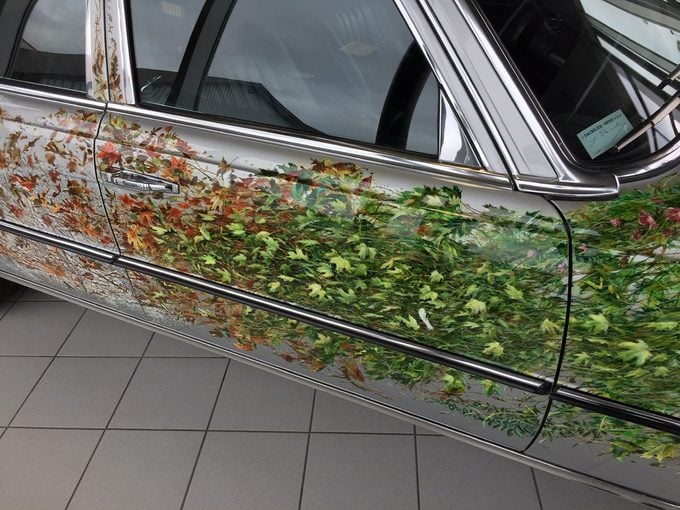
Artist Tom Forrestall has authored and appears in several books about and inspired by his craft, including Shaped by This Land (1974); This Good Looking Land: 117 Sketches of Nova Scotia (1976); Returning the Favour: Vision for Vision (1992); and Tom Forrestall: Paintings, Drawings, Writings (2008), by Tom Smart. Tom’s paintings are sold by the Mira Godard Gallery in Toronto.
Next, read the incredible story of one family’s heartwarming relationship with Canadian folk artist, Maud Lewis.
